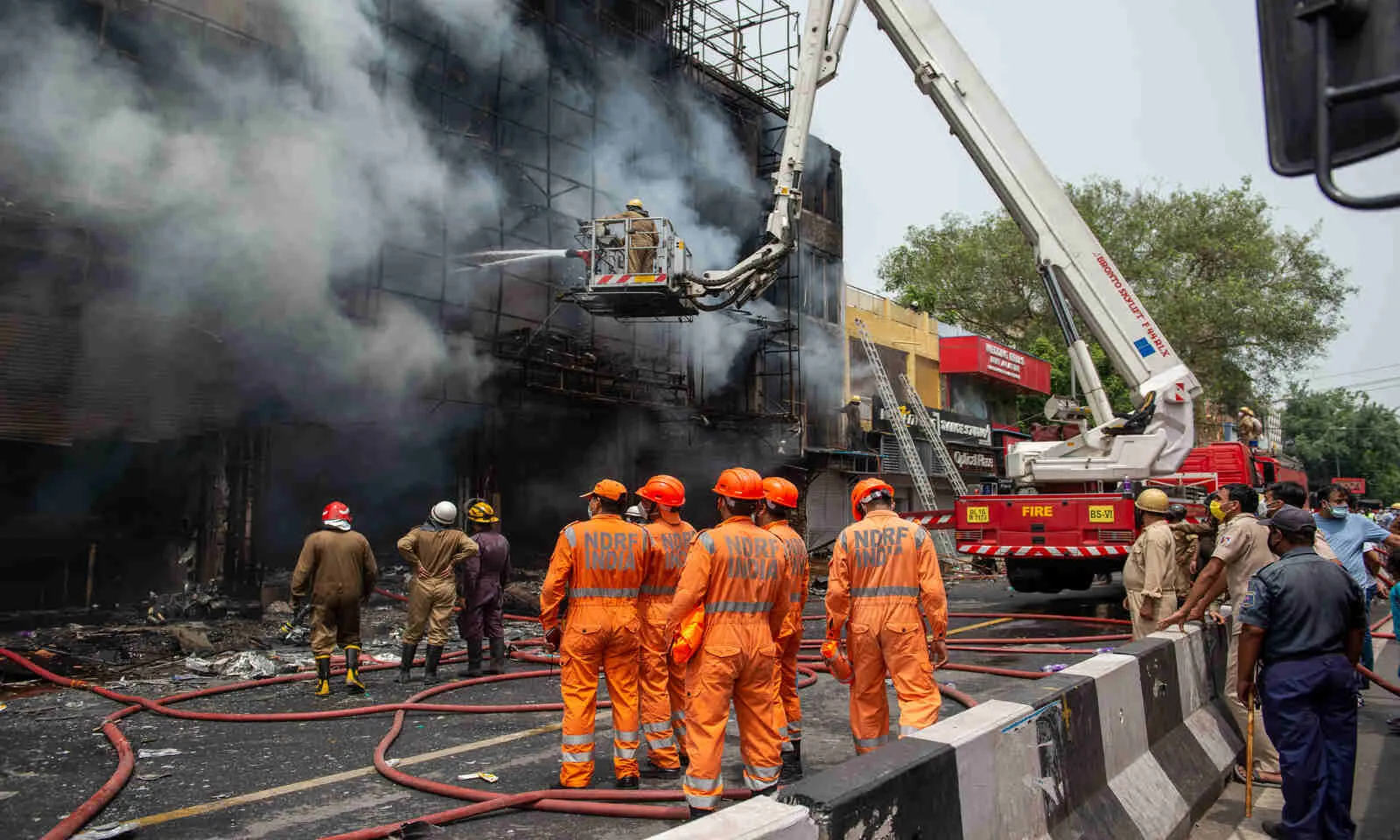Data Dive: Fire Accidents Steadily Dip, Yet Managed to Kill 35 People a Day in 5 Years
Accidental fires reduce by 44% between 2016 and 2020 with most fires being caused by cooking gas bursts, reveals analysis of official data

Representational Image: Shutterstock.com
Fire accidents have, on an average, killed 35 people a day in the five years between 2016 and 2020, showed Accidental Deaths and Suicides in India (ADSI) reports maintained by National Crime Records Bureau. This is when the number of such accidents and deaths has been steadily declining all these years.
In the five years, the number of fire accidents reduced by 44% — 16,695 in 2016 to 9,329 in 2020 — and the number of people dying in these accidents dipped by 46% — 16,900 in 2016 to 9,110 in 2020.
The number of people injured in fire accidents has been fluctuating over the years. In 2017, it was the lowest in the five years at 348, but it rose by 123% to 777 in 2018, and has been on a downward trend ever since.
There is a big disparity between the number of deaths caused by fire accidents and the number of people who survived with injuries. The mortality rate has generally remained high, showed the ADSI reports. This could be attributed to a variety of factors, such as the occurrence of more high intensity fires, or the lack of emergency medical care.
Maharashtra Saw 5 Fires a Day
Maharashtra, which contributes the highest to the country's GDP, also sees the highest number of accidental fires. With 9,344 incidents in the last five years, Maharashtra topped the list, followed by Madhya Pradesh (9,065). However, the number of these accidents has been steadily declining in Maharashtra — 3,063 in 2016 to 762 in 2020, a reduction of nearly 75%. Many other states too have seen a similar declining trend, such as Karnataka (55.9%), Gujarat (74%), and Rajasthan (62.6%).
On the other hand, Odisha saw an exponential rise of 205% in accidental fires between 2016 and 2020. Other large states like Tamil Nadu, Chhattisgarh and Uttar Pradesh have seen fluctuating trends but an overall decrease in the number of fires.
In 2020, Madhya Pradesh saw the highest number of fires (1,430), followed by Odisha (1,292) and Chhattisgarh (782). Madhya Pradesh also recorded the highest number of people who succumbed to these fires. The top five states in terms of fire casualties — Madhya Pradesh, Odisha, Chhattisgarh, Maharashtra and Tamil Nadu — collectively accounted for 54.7% of the total fire-related deaths in India in 2020.
The count of people hurt in the accidents remained low compared to the deaths. In fact, among the top 5 states, Odisha, Chhattisgarh and Maharashtra did not record any injuries at all in 2020.
Cooking Gas Bursts Caused Most Fires
In 2016, the top cause for accidental fires was cooking gas stove bursts, which accounted for 23.5% of the total fires. In 2020, the share remained almost similar — 22%. However, the share of electrical short circuits-caused fire grew from 15% to nearly 21% in the five years, even as the total number of electrical fire accidents went down from 2,500 to 1,943. In 2020, gas bursts and short circuits together accounted for 43% of the total fires incidents.
Accidental fires due to fireworks reduced in the five years by almost 70% from 253 to 77. Conversely, riots and agitations led to 18 times more fires in 2020 (36) than in 2016 (2).
When it comes to where the fires broke out, FactChecker found that over half of the total fires reported across the five years occurred in residential buildings. While the total fire accidents have come down by 44.1% since 2016, residential fires have recorded a slower decline at 35.5%.
The National Building Code is a set of guidelines to regulate the way construction of buildings takes place in India. The code contains fire safety requirements and stipulations, in addition to regulations for structural design, plumbing services, and approach to sustainability, among others. Often these guidelines are not followed, leaving buildings susceptible to fire accidents, according to the NCRB report. Many people lose their lives owing to a lack of a concrete evacuation plan.
Fires in commercial complexes and factories, and subsequent deaths have also gone down in the five years. Fires in mines, 28 of which were recorded in 2016, dropped to 0 in 2020.
Fires in vehicles (automobiles and trains) have seen a fluctuating pattern, increasing and decreasing every alternate year. Although, in 2020, such fires increased by 20.4% to 319 in 2020 from 265 in 2019. While everywhere else the numbers dipped, government buildings saw 10.4% more fires in 2020 than five years ago.
Fire Preparedness and Data Gaps
India faces a 90% shortage of firefighters, 78% shortage of firefighting vehicles, and a 61% shortage in the number of required fire stations, according to a 2019 Rajya Sabha response.
There also seems to be a gap in data regarding the status of firefighters and stations across the country. The last national survey to assess capacitive need for firefighting appliances, personnel and stations was undertaken in 2012 through RMS (Risk Management Solutions). The response by the home ministry about the gap in services is also based on the 2012 estimates. Post that, there has been little to no progress in assessing the gaps and taking adequate measures. The Directorate General of Fire Services website too, displays decade-old figures.
While there have been several news reports on how fire departments have been facing a shortage of firefighters, there is no recent and updated official data on the strength and situation of fire stations in the country.


